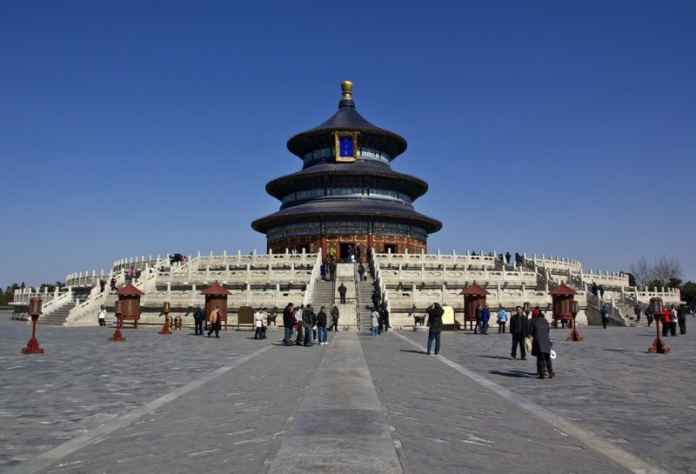China is one country where there is no dearth of must visit destinations. In fact, in your first visit, you’d be only able to enjoy a minuscule portion of the country. Given below is a list of places you should try and incorporate into your itinerary:
- The Great Wall of China: Listed as a World Heritage by UNESCO in 1987, Great Wall of China is famous, all the world over for being the world’s longest human-made structure. Stretching approximately 5,500 mile) from Shanhaiguan in the east to Lop Nur in the west of China, it crosses over five provinces namely Gansu, Shaaxi, Shanzi, Hebei, and Liaoning. The structure has been countlessly built and rebuilt in parts to strengthen the protection of the Chinese Empire. As mentioned above, the wall is spread over five provinces and can only be accessed from certain ‘legal’ portions, which are Juyongguan, Badaling, Mutianyu, Jinshanling, Gubeikou, Huanghuacheng and Simatai. Visitors should note that different sections have their own admission fees.
- The Teracotta Warriors: Listed by UNESCO in 1987 as one of the world’s cultural heritages, the Teracotta Warriors Museum is home to the preserved remains of platoons of clay soldiers, which were buried with China’s first emperor, Qin Shi Huang Di. The museum site is divided into three parts, namely Pit 1, 2 and 3, tagged in the order of their discoveries. A visit to this museum will provide you an interesting glimpse into Chinese history.
- Forbidden City: Located in Beijing near Tiananmen Square, the Forbidden City has been home to twenty-four Chinese emperors. Also known as the Palace Museum, it is among China’s top tourist attractions. Its construction was initiated by the Yongle Emperor in the 15th century, and the palace has housed emperors starting from the Ming Dynasty to the Qing Dynasty. As the name suggests, the Forbidden City was forbidden to the commons. In fact, the rigidity was such that any commoner who saw the emperor was killed. The site was named a UNESCO World Heritage Site in the year 1987. Some of the noteworthy halls in the Outer Court include Hall of Supreme Harmony, Hall of Complete Harmony and Hall of Preserving Harmony.
- Temple of Heaven: Located in the Chongwen district of Beijing, the Temple of Heaven is the largest masterpiece among China’s ancient sacrificial buildings. , The construction of Temple of Heaven was initiated by Ming emperor Yongle in the year 1420. Occupying an area of 273 hectares, the temple was used by emperors annually to worship the God of Heaven and pray for good harvests. Some of the most magnificent buildings of Temple of Heaven include the Circular Mound Altar (Huanqiutan), the Imperial Vault of Heaven (Huangqiongyu) and the Hall of Prayer for Good Harvest (Qiniandian).
- Huangguoshu Waterfall: The term Huangguoshu literally translates into ‘Yellow Fruit Tree’. Plunging a dramatic 77.8 meters across a 101-meter-wide span, Huangguoshu Waterfall happens to be the highest one in Asia. One of the most remarkable features of this waterfall is the fact that it is accessible for viewing from almost any angle. The best visiting season for the waterfall is June to August. This is when the water reaches a peak flow of 700 cubic meters per second.
If you manage to cover the above mentioned places in your first trip to China, you will have gathered a good understanding of Chinese traditions!













